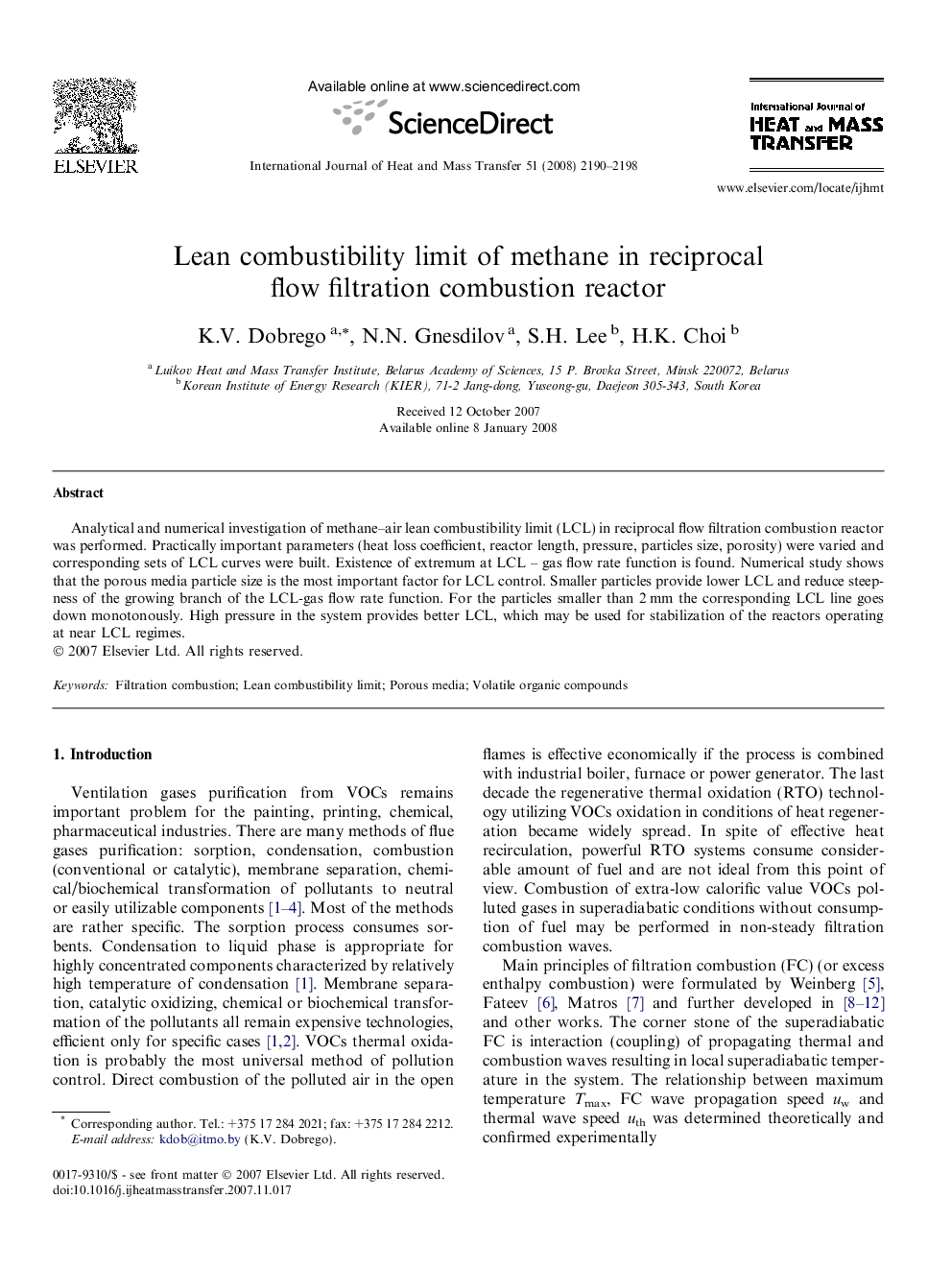| Article ID | Journal | Published Year | Pages | File Type |
|---|---|---|---|---|
| 662644 | International Journal of Heat and Mass Transfer | 2008 | 9 Pages |
Abstract
Analytical and numerical investigation of methane-air lean combustibility limit (LCL) in reciprocal flow filtration combustion reactor was performed. Practically important parameters (heat loss coefficient, reactor length, pressure, particles size, porosity) were varied and corresponding sets of LCL curves were built. Existence of extremum at LCL - gas flow rate function is found. Numerical study shows that the porous media particle size is the most important factor for LCL control. Smaller particles provide lower LCL and reduce steepness of the growing branch of the LCL-gas flow rate function. For the particles smaller than 2Â mm the corresponding LCL line goes down monotonously. High pressure in the system provides better LCL, which may be used for stabilization of the reactors operating at near LCL regimes.
Related Topics
Physical Sciences and Engineering
Chemical Engineering
Fluid Flow and Transfer Processes
Authors
K.V. Dobrego, N.N. Gnesdilov, S.H. Lee, H.K. Choi,
